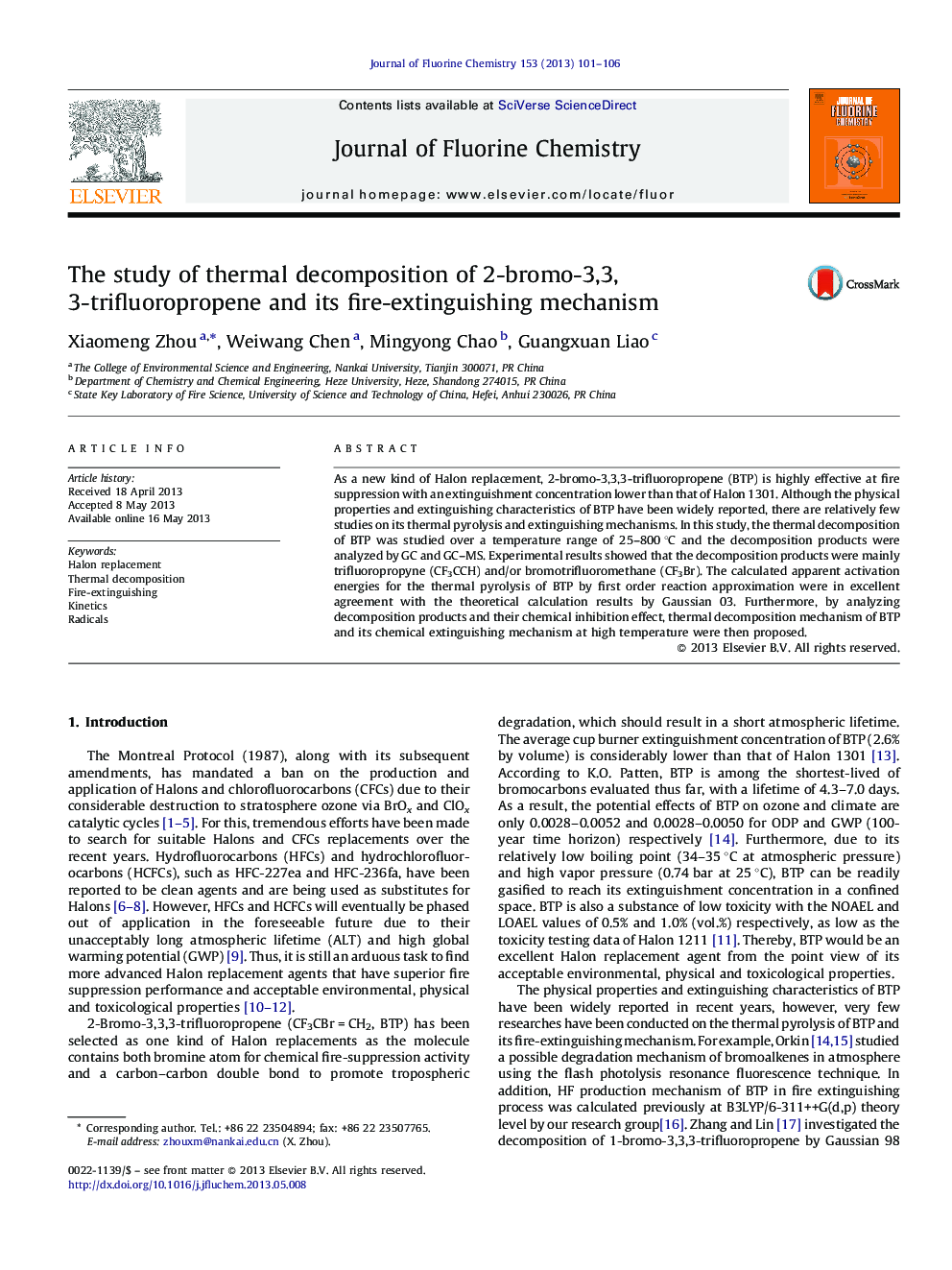| Article ID | Journal | Published Year | Pages | File Type |
|---|---|---|---|---|
| 1314425 | Journal of Fluorine Chemistry | 2013 | 6 Pages |
•Pyrolysis characteristics of BTP were studied under various conditions.•The high Ea obtained by calculation can explain the good thermal stability of BTP.•Theoretical results calculated by Gaussian 03 agree well with experimental values.•Thermal decomposition and fire-extinguishing mechanisms of BTP were discussed.
As a new kind of Halon replacement, 2-bromo-3,3,3-trifluoropropene (BTP) is highly effective at fire suppression with an extinguishment concentration lower than that of Halon 1301. Although the physical properties and extinguishing characteristics of BTP have been widely reported, there are relatively few studies on its thermal pyrolysis and extinguishing mechanisms. In this study, the thermal decomposition of BTP was studied over a temperature range of 25–800 °C and the decomposition products were analyzed by GC and GC–MS. Experimental results showed that the decomposition products were mainly trifluoropropyne (CF3CCH) and/or bromotrifluoromethane (CF3Br). The calculated apparent activation energies for the thermal pyrolysis of BTP by first order reaction approximation were in excellent agreement with the theoretical calculation results by Gaussian 03. Furthermore, by analyzing decomposition products and their chemical inhibition effect, thermal decomposition mechanism of BTP and its chemical extinguishing mechanism at high temperature were then proposed.
Graphical abstract2-Bromo-3,3,3-trifluoropropene (BTP) is a new promising Halon replacement. Thermal decomposition and chemical fire-extinguishing mechanisms of BTP were investigated experimentally and theoretically in this study.Figure optionsDownload full-size imageDownload as PowerPoint slide
